 42652
42652
The Moldavian language is the basis of the literal language
Certainly, these and other evident generally known proofs of differences do not influence the literal form of speech which is being called by Moldavians “moldovenyaske” (Moldavian) for 700 years, and the Wallachian called “rominyaske” (Romanian) in XIX.
The summaries of N. Corlateanu and N. Raevskiy and many other linguists confirm the paper results of Romanian academician Iorgu Iordan: “The language spoken on that and this side of the Milkova river (the river between Moldova and Wallachia), as the Romanian linguist said, has the local peculiarities typical to every province… Under the circumstances the Moldavian speech for the citizens was like the language of the whole nation”. (I. Iordan points in the footnote that his conclusion relates to the Muntyanskiy dialect as well). The Moldavian language immortalized by the I. Nekulche “had therefore the specific position, I would say rather privileged…”, Iorgu Iordan wrote.
Iorgu Iordan stated his fair and grounded conclusion in the years when the works of Moldavian patriarch M. Sadovyanu were extremely popular, when Moldavians Hikolay Labish, Viktor Teleuke, Chezar Ivanesku, Ion Drutse drew attention to themselves. Vasile Pogor, Kalistrat Khogash, Mikhail Kogelnichanu, Aleku Russo, Vasile Aleksandri, Mikhail Eminesku, Ion Kryange, Aleksey Mateevich were glorifying the country in Moldavian – “Moldavians who carried an invasion to the Romanian literature”, the creators who like M. Eminesku “used the Moldavian forms being Moldavians”.
The fact that M. Eminesku created his immortal poetic works being in love with the Moldavian language, the fact that he valued the Moldavian speech, was also confirmed by I. Slavich: “according to Eminesku the most pleasant and rich in sounding is the Moldavian dialect”.
Underlining “the role of Moldova” in the efforts of “protecting the language from innovators’ encroachments” and realizing “the cultural significance of Moldova, its role as the teacher for the Romanians all over the world”, M. Eminesku points out that (in the article “The Romanian theatre repertoire”): “Moldova plays a certain part in the development of the Romanians. Here, in huge remoteness from the intellectual quackery, complacency and political centre corruption (Bucharest) the salutary reaction against the ignorance and the sense of lie and academicians was created”.
Discussing the problem of the modern literal language beginning epoch, The Academic Senate of the Linguistics Institute from Bucharest stated that both considering the ideological content and the language, our modern literature began in the first part of the XIX century from the writers united by the «Dacia literară» magazine. The main were M. Kogelnichanu, Basile Aleksandry, Aleku Russo, Kostake Negrutsi… The language they used became the language of our modern literature as in its basis was the real peoples’ speech”. (DLRLC, I, 1953). The real Moldavian people by no doubt. Because all these writers as later M. Eminesku, I. Kryange, M. Sadobyany and many others, were Moldavians, were born in Moldova, lived in Moldova, wrote in Moldavian about Moldova.
Indisputable proofs of different phonetic, grammar, lexical peculiarities of the language Moldavians speak, a mellifluous Moldavian language, are shown by the registers of the explained words which accompany today the Romanian editions of works of I. Kryange, M. Eminesku, K. Khogasha, M. Sadovyanu. Words and forms explained for Wallachians and Romanians. Moldavians know them very well because it was them who created this wealth.
Thus, all abovementioned represent the convincing proof of the fact that the Wallachian/Romanian language is the dialect of the Moldavian one. This statement can be confirmed by other numerous facts as well:
- Even in the XVII century the extensive texts in Moldavian were written: the chronicle by Gr. Ureche (1635), the chronicle by M. Costin (1675);
- First studies in the linguistic field of the Moldavian language were also written in the XVII century: “About our Moldavian language” (1635) by Gr. Ureche, “About the Moldavian language” (1677, in Polish) by M. Costin and that way the linguonym “the Moldavian language” passes into the European scientific circles;
- The Moldavian writers’ works which are related to the period after 1840 – M. Kogelnichanu, V. Aleksandry, K. Negrutsi, Al. Russo and others, grounded the foundation for the literal language, common to Moldavians and Wallachians.
Moldovenisms which are given by the modern dictionaries, including those which were published in Romania, can be completed by the examples from Gr. Ureche, Miron Costin, Ion Hekuleche, M. Eminesku, K. Khogash, I. Teodoryan, N. Labish, from the works of P. Botsu, Gr. Vieru, V. Teleuke. A. Lupan, P. Zadnipru, G.V. Madan, N. Kostenko, Ion Drutse and others. The greatest number of obvious cases can be found in the works of the following authors: I. Kryange, M. Eminesku, M. Sadovyanu. The most frequently used quotations are from M. Eminesku according to the volume of his genuine works not taken from folklore. It is absolutely natural according to academician A. Rosetti: “Eminesku in his poems uses the great number of words and expressions from the language which is spoken in Bukovina and Moldova”, in other words which are typical for the language of Moldavians. As this “great number of words and expressions from the language which is spoken in Bukovina and Moldova” is not known to Wallachians or they just don’t understand it, it is related in the Romanian dictionaries as the category of “everyday” (kitchen, as it can be supposed), “public”. So, the forms, words, expressions used by Eminesku which “enriched the heritage of the national language” (A. Rosetti) were not honored to be considered as widely used, literal, Romanian. This discrimination of the Moldavian words and expressions used by M. Eminesku should not hurt the national-linguistic consciousness of Moldavians. According to the explanatory dictionary of the Romanian language, “public” (popular) means “made by people”, thus, in case of Eminesku – by Moldavian people. Public also means “typical for the people”, that is for Moldavian people. Thereby, the Romanian dictionaries prove again the conclusion of Perpessichius (a Romanian critic) that “Eminesku, being a Moldavian, demonstrates the natural inclination to forms connected with his origin, the Moldovanian forms”.
The works created by the most talented representatives of Moldavian people from the Anonymous author of “Mioritsi”, from Grogore Ureche to Ion Drutse cover the centuries-old history of Moldavians, local customs and everyday life, hopes and expectations. Permanent temper and individuality of Moldavian spirituality are seen in public works, in the mellifluent Moldavian language where the Moldavian temper is perpetuated, their typical ethno psychological features which are going back to the immemorial time. “Our best writers (…) are the best language experts… Those who has more affluent and beautiful language, all administered communion to the great source of public language: Eminesku, Sadovyan and incomparable Kryange”. “The greatest writer - this Kryange – originates from the people, he writes like people speak” (G. Ibraileanu). That is in Moldavian: see the Moldavian words registers in the Kryange books’ editions since 1890 till today.
Analyzing the linguistic peculiarities of Moldova, the academician Iordan concludes: “The regional peculiarities of the language of I. Nekulche coincide on the whole with the peculiarities of the modern Moldavian dialect, with the significant differences which are explained mostly by the qualitative than quantitative character…”. Another well-known Romanian commentator G. Kelinesku underlines the charm, artistry, musicality, creative possibilities of the Moldavian language: “Moldavian dialect with the gentle tonal sounds is artistic by itself. In Muntenia there is a lesser probability of Nekulche or Kryange”.
In connection with this short number of fundamentally important true statements, it’s high time for the conclusion of The Academic Senate of the Linguistics Institute from Bucharest which stated that “from the point of view of ideological content our modern language goes back to the first half of the XIX century and its origination is connected to the group of writers who cooperated with the “Dachiya literare” magazine headed by M. Kogelnichanu, V. Aleksandri, A.Russo, K. Negrutsi who were initial advocates of our language and culture unity. The language these writers created in, became the language of our literature as the real source of the public speech is based on it”. As we already understand, all abovementioned writers were Moldavians, they wrote in Moldavian and created literature. The Moldavian one…
In the second half of the XIX century “Using the certain number of words and phrases of public language which is spoken by people (“From Moldova to Bukovina”), Eminesku widened the limits of literal style language - summarizes Al. Rosetti, and at the same time, attached typical features to his genius” as he was Moldavian.
In conclusion, let’s remind ourselves of two ideas stated by the distinguished Romanian authors:
1. The Romanian culture as it is now is that way thanks only to Moldova (G. Ibrailyan);
2. The language derives its strength mainly from Moldova (G. Kelinesku).
În contextul lansării programului ”Satul European”, ce probleme vitale există în localitatea dumneavoastră?
- Statut:
- Sat
- Prima atestare:
- 1790
- Populația:
- 1306 locuitori
Bursuc este un sat şi comună din raionul Nisporeni. Bursuc este unicul sat din comuna cu acelaşi nume. Localitatea se află la distanța de 25 km de orașul Nisporeni și la 54 km de Chișinău. Conform datelor recensămîntului din anul 2004, populaţia satului constituia 1306 oameni. Satul Bursuc a fost menționat documentar în anul 1790.





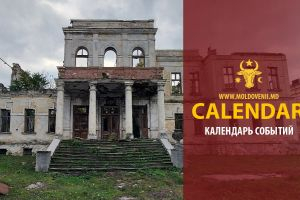 18 aprilie - Calendarul celor mai importante evenimente din trecut și prezent
18 aprilie - Calendarul celor mai importante evenimente din trecut și prezent 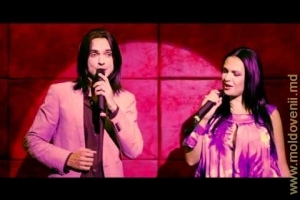 MELODIA ZILEI: Serj Kuzenkoff & Roxana - Valsul Dragostei
MELODIA ZILEI: Serj Kuzenkoff & Roxana - Valsul Dragostei  Zeci de locuințe gratuite vor fi acordate unei categorii de cetățeni: ce a decis…
Zeci de locuințe gratuite vor fi acordate unei categorii de cetățeni: ce a decis… 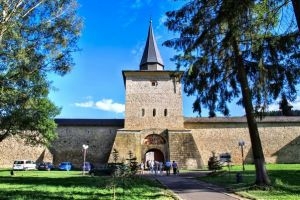 Moldografia: Mănăstirea Sucevița
Moldografia: Mănăstirea Sucevița  Emil Loteanu – ultimul romantic al cinematografiei moldovenești
Emil Loteanu – ultimul romantic al cinematografiei moldovenești 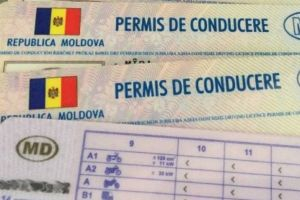 Guvernul a aprobat. Încă o țară va recunoaște permisele de conducere eliberate î…
Guvernul a aprobat. Încă o țară va recunoaște permisele de conducere eliberate î… 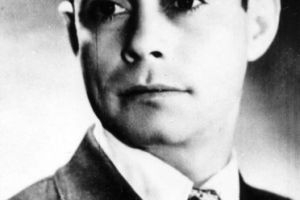 Spiridon Mocanu – legenda dansului popular
Spiridon Mocanu – legenda dansului popular 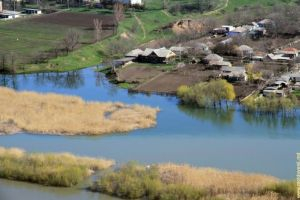 Cod galben de inundații. Ce localități pot fi afectatre
Cod galben de inundații. Ce localități pot fi afectatre  REŢETA ZILEI: Salată din legume ca la Chişinău
REŢETA ZILEI: Salată din legume ca la Chişinău  Evoluție superbă pentru moldoveanul Radu Albot la un turneu de tenis din Bucureș…
Evoluție superbă pentru moldoveanul Radu Albot la un turneu de tenis din Bucureș… 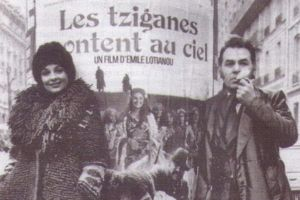 Svetlana Toma și Emil Loteanu la Paris (Foto)
Svetlana Toma și Emil Loteanu la Paris (Foto) 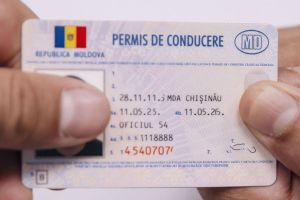 Încheierea acordului moldo-spaniol privind preschimbarea permiselor de conducere
Încheierea acordului moldo-spaniol privind preschimbarea permiselor de conducere 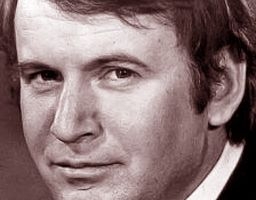 Regizorul Ion Scutelnic la o frumoasă aniversare
Regizorul Ion Scutelnic la o frumoasă aniversare 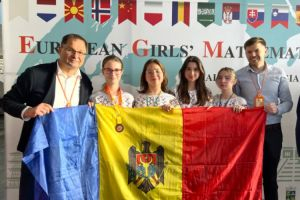 O nouă medalie cucerită de elevii moldoveni. La ce disciplină s-au remarcat
O nouă medalie cucerită de elevii moldoveni. La ce disciplină s-au remarcat  Emil Loteanu și Robert de Niro – doi titani ai cinematografiei mondiale
Emil Loteanu și Robert de Niro – doi titani ai cinematografiei mondiale 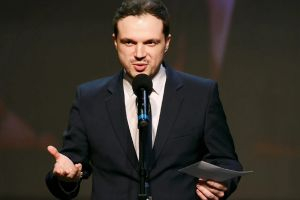 Paul Gamurari, maestru în artă: "De multe ori, muzicienii din Moldova sînt lăsaț…
Paul Gamurari, maestru în artă: "De multe ori, muzicienii din Moldova sînt lăsaț… 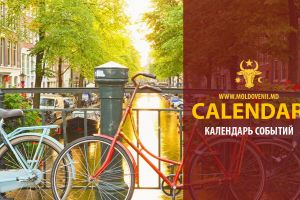 19 aprilie - Calendarul celor mai importante evenimente din trecut și prezent
19 aprilie - Calendarul celor mai importante evenimente din trecut și prezent 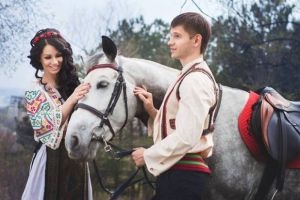 MELODIA ZILEI: LUME - Moldovenii care Plîng
MELODIA ZILEI: LUME - Moldovenii care Plîng  Recensămîntul Populației și Locuințelor: În ce condiții cetățenii pot fi amendaț…
Recensămîntul Populației și Locuințelor: În ce condiții cetățenii pot fi amendaț…  Moldografia: Cascada din partea dreaptă a Defileului de la Ţipova
Moldografia: Cascada din partea dreaptă a Defileului de la Ţipova 